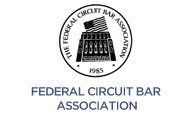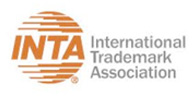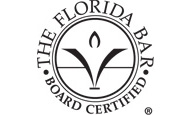Copyrightsmhdpatents2014-06-19T21:33:15+00:00
Copyright Law
Copyright Law Information
Copyrights provide protection for literary, artistic and musical works. Copyrights come into existence upon creation of the work. Creation is defined as when the work is “fixed in a tangible medium.” This definition means that the work is in some type of permanent form, i.e., on paper, computer hard drive, cassette tape, etc. The filing of the copyright application with the Copyright Office acts to register your existing copyrights. Substantial advantages are provided from registration, including the possibility of receiving attorney fees and statutory damages in the event of infringement of the previously registered copyright. Additionally, in most instances a copyright infringement action cannot be brought by the copyright owner until the work has been registered with the United States Copyright Office.
Copyright, a form of intellectual property law, protects original works of authorship including literary, dramatic, musical, and artistic works such as poetry, novels, movies, songs, computer software and architecture. Copyright does not protect facts, ideas, systems, or methods of operation, although it may protect the way these things are expressed.
Your work is under copyright protection the moment it is created and fixed in a tangible form so that it is perceptible either directly or with the aid of a machine or device.
No. In general, registration is voluntary. Copyright exists from the moment the work is created. You will have to register, however, if you wish to bring a lawsuit for infringement of a U.S. work.
Registration is recommended for a number of reasons. Many choose to register their works because they wish to have the facts of their copyright on the public record and have a certificate of registration. Registered works may be eligible for statutory damages and attorney’s fees in successful litigation. Finally, if registration occurs within five years of publication, it is considered prima facie evidence in a court of law.
To register a work, a completed application form is submitted to the U.S. Copyright office, along with a non-refundable filing fee of $30, and a non-returnable copy or copies of the work to be registered.
The time the Copyright Office requires to process an application varies, depending on the amount of material the Office is receiving. You may generally expect a certificate of registration within approximately 8 months of submission.
A deposit is usually one copy (if unpublished) or two copies (if published) of the work to be registered for copyright. In certain cases such as works of the visual arts, identifying material such as a photograph may be used instead. The deposit is sent with the application and fee and becomes the property of the Library of Congress.
Yes, you must send the required copy or copies of the work to be registered. These copies will not be returned. Upon their deposit in the Copyright Office, under sections 407 and 408 of the Copyright law, all copies, phonorecords, and identifying material, including those deposited in connection with claims that have been refused registration, are the property of the United States Government.
You may register unpublished works as a collection on one application with one title for the entire collection if certain conditions are met. Published works may only be registered as a collection if they were actually first published as a collection and if other requirements have been met.
No. Works created on or after January 1, 1978, are not subject to renewal registration. As to works published or registered prior to January 1, 1978, renewal registration is optional after 28 years but does provide certain legal advantages.
A mere listing of ingredients is not protected under copyright law. However, where a recipe or formula is accompanied by substantial literary expression in the form of an explanation or directions, or when there is a collection of recipes as in a cookbook, there may be a basis for copyright protection.
Yes. Architectural works became subject to copyright protection on December 1, 1990. The copyright law defines “architectural work” as “the design of a building embodied in any tangible medium of expression, including a building, architectural plans, or drawings.” Copyright protection extends to any architectural work created on or after December 1, 1990, and any architectural work that on December 1, 1990, was unconstructed and embodied in unpublished plans or drawings. Architectural works embodied in buildings constructed prior to December 1, 1990, are not eligible for copyright protection.
Any work that is protected by U.S. copyright law can be registered. This includes many works of foreign origin. All works that are unpublished, regardless of the nationality of the author, are protected in the United States. Works that are first published in the United States or in a country with which we have a copyright treaty or that are created by a citizen or domiciliary of a country with which we have a copyright treaty are also protected and may therefore be registered with the U.S. Copyright Office.
Under the copyright law, the creator of the original expression in a work is its author. The author is also the owner of copyright unless there is a written agreement by which the author assigns the copyright to another person or entity, such as a publisher. In cases of works made for hire, the employer or commissioning party is considered to be the author.
Although the general rule is that the person who creates the work is its author, there is an exception to that principle; the exception is a work made for hire, which is a work prepared by an employee within the scope of his or her employment; or a work specially ordered or commissioned in certain specified circumstances. When a work qualifies as a work made for hire, the employer or commissioning party is considered to be the author.
Minors may claim copyright, and the Copyright Office does issue registrations to minors, but state laws may regulate the business dealings involving copyrights owned by minors.
Publication has a technical meaning in copyright law. According to the statute, “Publication is the distribution of copies or phonorecords of a work to the public by sale or other transfer of ownership, or by rental, lease, or lending. The offering to distribute copies or phonorecords to a group of persons for purposes of further distribution, public performance, or public display constitutes publication. A public performance or display of a work does not of itself constitute publication.” Generally, publication occurs on the date on which copies of the work are first made available to the public.
Publication is not necessary for copyright protection.
Publication occurs at the discretion and initiative of the copyright owner. The Copyright Office has no role in the publication process.
Yes. Like any other property, all or part of the rights in a work may be transferred by the owner to another.
Copyright does not protect names, titles, slogans, or short phrases. In some cases, these things may be protected as trademarks. However, copyright protection may be available for logo art work that contains sufficient authorship. In some circumstances, an artistic logo may also be protected as a trademark.
Copyright does not protect ideas, concepts, systems, or methods of doing something. You may express your ideas in writing or drawings and claim copyright in your description, but be aware that copyright will not protect the idea itself as revealed in your written or artistic work.
For works created after January 1, 1978, copyright protection will endure for the life of the author plus an additional 70 years. In the case of a joint work, the term lasts for 70 years after the last surviving author’s death. For anonymous and pseudonymous works and works made for hire, the term will be 95 years from the year of first publication or 120 years from the year of creation, whichever expires first;
For works created but not published or registered before January 1, 1978, the term endures for life of the author plus 70 years, but in no case will expire earlier than December 31, 2002. If the work is published before December 31, 2002, the term will not expire before December 31, 2047;
For pre-1978 works still in their original or renewal term of copyright, the total term is extended to 95 years from the date that copyright was originally secured.
A copyright notice is an identifier placed on copies of the work to inform the world of copyright ownership. While use of a copyright notice was once required as a condition of copyright protection, it is now optional. Use of the notice is the responsibility of the copyright owner and does not require advance permission from, or registration with, the Copyright Office.
The United States has copyright relations with more than 100 countries throughout the world, and as a result of these agreements, we honor each other’s citizens’ copyrights. However, the United States does not have such copyright relationships with every country.






